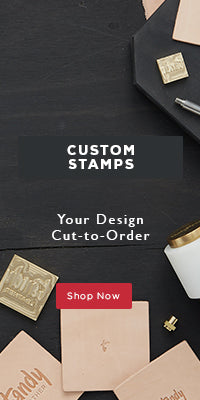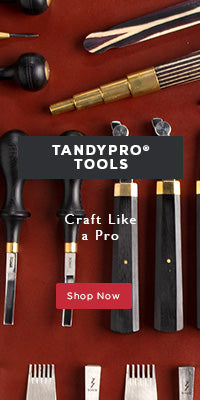All Leathercraft Library patterns and projects are property of Tandy Leather. Projects and patterns available are a part of the Tandy Leather Archive and may contain outdated product information or service offerings. Projects and patterns can be reproduced for personal use by printing, but Tandy Leather cannot guarantee the quality of reproduction or printing due to the image quality available. Some project and pattern themes or motifs may not be representative of Tandy Leather’s current views.

How to Choose Your Leather

How to Choose Your Leather
Written by: Jim Linnell
Many years ago, when I was running a Tandy Leather retail store, people would often ask for my help in trying to choose the right piece of leather for their project. There’s more that goes into it than you might think!
The Perfect Piece Myth
First, you need to have some idea of what you plan on making to determine if you need a heavier weight piece or lighter weight piece. Choosing the right weight of leather is pretty important. The next thing that I would often get to help them with is actually picking out the perfect piece.
A lot of folks, when they come in, are looking for leather that has absolutely no blemishes; they want it clean and pretty and such. That's typically the primary thing that they consider when they're choosing, however I tell folks that that’s down the list as far as importance. I advise them to not worry so much about whether the cosmetics look clean, but rather let's first of all be concerned about whether it's a good piece of leather.
Color Coded Hides

Something that’s more important is understanding the difference in color, and what that tells you about the tanning agents in it. For context, one of the very last things that's done in the tanning process of a good piece of carving leather is that they will hand rub fat liquors and oils into the leather. Those additives there at the end are what give us the natural burnish and the rich color that comes up as we're carving the leather, which is something most people are looking for when purchasing veg tan.
When you see a piece of leather that is really light and blonde, that's not necessarily going to give you that rich burnish when tooling because there's a reason this leather came out nice and bright; it's because it has fewer of those natural oils in it. It’s worth noting that this lighter color does help you when it comes to coloring with translucent dyes like the Waterstain since the color of the leather can impact the final coloration.

Examining Aesthetics
Next, I will look at the cosmetics, however, that doesn’t always mean on the surface. Some perfectly good pieces of leather may have marks on them where the grain has been disrupted; scabs, bites, wrinkles. Some folks would see that and say, “you know, I just don’t think I can make that work.”
However, it’s about perspective. When I look at that kind of thing, I think, “That could be so cool! I mean, if I tool the design on there then used an antique, this grain would pop out.” Some of those impurities may actually produce pieces that people would love to know what tools you used to get that unique background texture behind there.
The other thing I would encourage you to do when you're buying a piece of leather is to look at the back side of it. When they pull that hide off the carcass there are some things that might sometimes show up as cuts or scars. These blemishes may go all the way along the backside, which could impact how that piece of leather tools.
Some of the higher quality leathers will be run through a splitter to get the weight even and consistent, and typically you can get an idea of if that’s been done by looking to see if the back is nice and clean.
Inevitably, you'll notice there are some different colored areas near the belly or around the neck that may be a little stretchy here and it's going to be fleshy here on the back. Some of those areas may look more fibrous, but that’s typically nothing to worry about either.
Final Thoughts
First and foremost, choose a piece of leather that fits the project you are doing. There's no reason for you to end up with a piece of leather that’s not what you want if you are just a little bit more intentional about it.
What if you can’t visit the store? A lot of people have to order their leather online because it's just not convenient for them to run down and hand pick the piece of leather that they want. I think, in those cases, if you are having somebody else pick your leather, it's best to call them when you can.
Most of your local store managers really want to see you succeed, so they’re motivated to help you find the right piece for what you are working on. If you have a store that you visit occasionally, try to introduce yourself to the manager and let them know what kind of projects you typically work on. Maybe even look at some of the leather there and show them examples of what you’d typically buy if you were able to come into the store yourself. Learning to develop that kind of a relationship with the people that hand pick your leather for you can be really helpful in developing confidence and trust.








Leave a comment